The southernmost province, Chiapas, is especially interesting for the people, traditionally dressed, although churches and ruins also have their place.
The next day we leave early for the long drive to San Cristobal de las Casas, in Chiapas. No wonder Mexico starts late, at 6.30 am it is still dark. At 9 we enjoy a simple breakfast in a roadside café, where I am sure we got hugely overcharged for our eggs and bacon and watery coffee, and where we were just laughed at when we declined the tortillas and asked for bread instead; obviously, the woman did not know what bread was. After a while the cactus-filled mountain scenery gives way to the flatter grounds and palm trees of the Isthmus of Tehuantepec, the narrowest part of the country. Here it should be possible to dip in the Pacific in the morning and bath in the Atlantic in the afternoon. South of the Isthmus the road starts to climb again and enters the province of Chiapas.
Almost immediately the presence of military is felt, and of an excessive number of police – SE Turkey revisited. All are heavily armed and protected with bulletproof vests and helmets. It is not long after the time that the Zapatistas, led by Subcommandante Marcos fought a guerilla war, originally for protection of the indigenous Mayan people, and increasingly demanding more autonomy for Chiapas. We have seen police before in Mexico. Mainly in the cities, in large numbers, and often openly carrying big guns, but never as many as in Chiapas. The tension of the past uprisings has clearly not yet fully abated.
Just after Tuxla, the provincial capital, we pass the Sumidero Canyon, and observe the 1500 meter high walls from above, and from the canyon entrance. But the rest of the landscape is not spectacular, it is nice but nothing special, mountains covered with pine trees, lots of corrugated iron roofs on the houses, not very authentic, all together. Except for the people, that is: many, men and women still proudly wear their traditional dress, the women in dark skirts and colourful huipiles, and the men often in skirts or half-long trousers and boots, and heavy rough cotton covers, complete with hat.
San Cristobal itself is lovely, with its obligatory Zocala and cathedral, but more because of its streets with low, brightly painted houses, window grills and occasional balconies. There is a rather awful municipal palace, and a spectacular Santo Domingo church with an artisanal market outside, and then there is the normal market. Here we finally observe the real thing, an authentic atmosphere, many people in traditional dress selling flowers, vegetables, plastics, meat, live chicken and turkey, dried fish and, perhaps, fresh fish. The colours and smells are everywhere, a wonderful experience of senses.
Sunday is market day in the Indian villages around, so we decide to make a tour past some of them. Many of the villages have fortified police posts outside, with sandbags for protection, and manned by heavily armed soldiers and police. Not a pleasant set-up, but inside the villages their presence was mostly minimal, except for the occasional army truck passing, full of armed and uniformed men. Firstly, we came to Zinacantan, where a large white church dominated a rather thin market. Everybody in traditional dress, which here is a beautiful blue-purple for women.
Then on to Chamula, more touristy with a much bigger market and a local church, a simple structure that represents a mixture of Catholic and indigenous beliefs. Inside dozens of families have set out a series of burning candles on the floor, which is further covered by grass only, and are praying aloud on their knees, presumably to the tens of saints, some of dubious origin, that adorn the walls. The whole gives an eerie feeling, this empty building without any church furniture, but full of burning candles supporting what must be regarded as pagan rituals in a church. When I take a picture of a group of men dressed for a traditional ceremony outside I get arrested. Several stick-wielding youngsters bring me up to the president, of the religious society no doubt, who threatens with ‘severe punishment’, but I manage to convince him of my innocence, and I am let off. In the next village, Tenejapa, we wisely refrain from photographing, which was a pity, as especially the men are spectacularly dressed for their ceremonies, in largely black tunic, with red on the sides, leather belts and white hats. But the atmosphere is unpleasant, people do not smile and we feel much as intruders (which we probably are), so we leave again soon after arriving. There were no other tourists.
We depart the next day early, in the morning mist, towards the Guatemaltecan border. The scenery is spooky, with occasional sunlight coming through the clouds shining on largely burned fields, with smoke still vaguely visible in the distance, as an alternative to the mist. Patches of ice lay next to the road, as a testimony how cold it had been at night. However, it gradually clears up, and when we arrive at the ruins of Chincultic it is sunny again. This site is lovely, completely deserted, no tourists, with a large plaza and the smell of mimosa leading you to a steep climb up the temple, from which one has magnificent views over the site and the lakes around it. On the side is another path, leading to a ball court and a number of steles, nothing special really if you compare it with the superb steles in the National Museum that we hardly paid any attention to because there was so much to see. Yet, in the open they have a special appeal, and we made many d-tours to observe every one of them, even though I think they are far from ‘in-situ’, and have been placed rather randomly, and probably fairly recently, on the site. A little further are the Lagos de Montebello, a nature reserve bordering Guatemala with slopes full of pine trees, many burned (so much for the nature reserve) and many suffering from beautifully coloured ‘plantas parasitas’, against the backdrop of innumerable larger and smaller lakes. Unfortunately, rubbish is already piling up along the roads, there is no respect for nature yet, in this country. We sleep in Comitlan, a small town with hundreds of shoe shops, hairdressers and pharmacies, for one reason or another.
next: Palenque and the other Mayan ruins
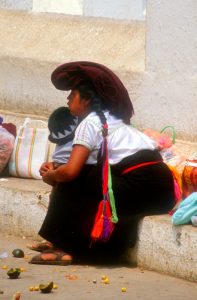
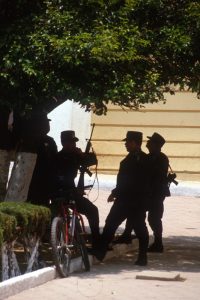
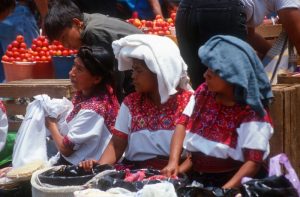
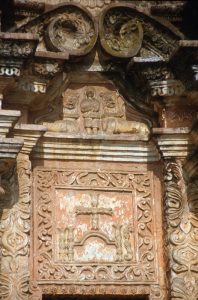
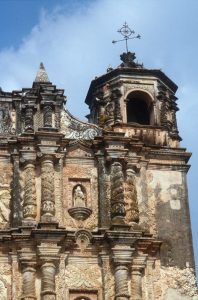


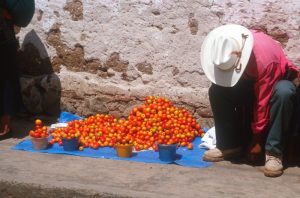
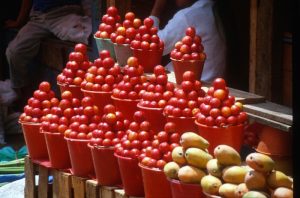
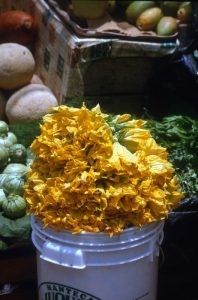


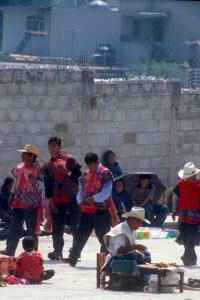

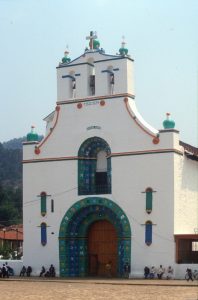
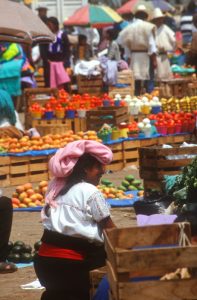
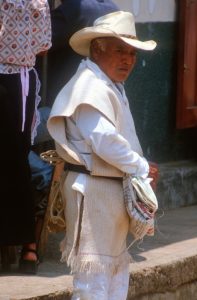
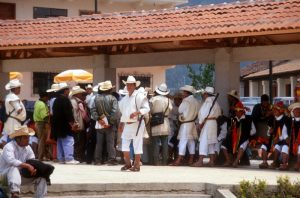

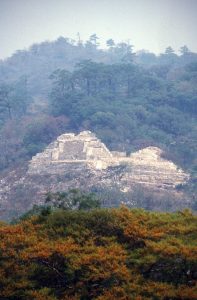
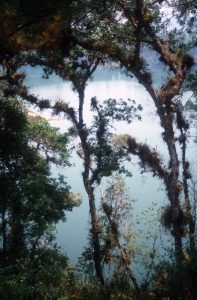













just a little remark: what you call “colourful input for the waving” are actually wound up hamocs. We bought a double size one on our passage to Cancun in 2000 and we still use it.
Bises et bonne année
Corinna
Ha Corinne, thanks for the correction, and how nice that you still keep coming back to the site. We are traveling again, first Argentina, and now in Chile, so watch this space. Best wishes to you guys, too, hope to meet in person this year!
Hi you travellers,
Yesterday I was reading the whole morning all your travel experiences from Mexico on, as I had lost the thread for a wile. I am now waiting for your experiences in Peru as we came to love this country while staiing in Pucallpa ( Amazon region) from 1980 to 84.
Once home dont forget your promise to come and meet us in the beautiful Provence, spring is a lovely season and the wine is light but tasty.
Bonne continuation
Corinna
Ha Corinne, we will do our best to come to France, which is a lot easier than Chile and Peru! On our current trip, I need to temper the expectations, we won’t spend time in the Amazon region, that is for a future trip. But there is still plenty to enjoy, I am sure!
I am waiting for your further experiences and understand that the crochet to the forest would be another long trip. The country is huge and one has to undergo restricitons. Have a nice time